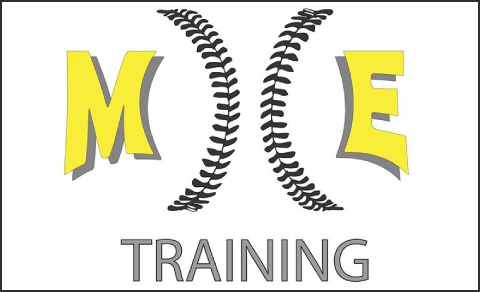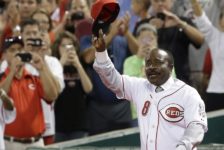(Photo Credit: Getty Images)
One of the most polarizing conversations in the game of baseball right now is the matter of Hall of Fame voting.
To be honest, I think much of it has to do with the lack of story lines this time of year. Being that we are in January and the hot stove is historically slow, this is the next best thing. I am a baseball junkie, so I truly enjoy the nature of the arguments. Baseball is traditionally slow to evolve so it seems there is a debate regarding almost every player. For me, 2016 was one of the most enjoyable Hall of Fame classes being that Mike Piazza and Ken Griffey Jr. were the only players inducted and they were my two favorite players growing up in the late 90s.
The bottom line is that the voting has vastly improved since the number of voters decreased from 545 to 440 a couple years ago. Writers that have been retired from covering games should not be voting and that change was implemented and received great feedback. For the most part, they get the right players in but the issue right now is more complex than in any previous year.
The primary reason is because it’s the perfect storm of the “steroid era” players (Barry Bonds, Roger Clemens, Manny Ramirez) mixed with some players that are towards the end of their ballot (Edgar Martinez), plus another dozen players (Larry Walker, Curt Schilling, Mike Mussina, Billy Wagner) that would be seriously considered if not for the bevy of great players that all retired within a five-year stretch of each others. That’s not even counting the players that are considered a lock such as Chipper Jones, Jim Thome and Vladimir Guerrero. That leaves the writers with a lot of tough calls and moral dilemmas.
I want to do a quick rundown of the players that I feel strongly about.
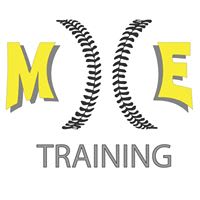 Barry Bonds: As the years go on, his support has increased significantly. This was to be expected. Primarily because the memories of the Mitchell Report and the steroid allegations fade as the years go on. Also, people are beginning the realize there is such a gray area of who actually was caught with steroids with who was alleged to be a user. Once Mike Piazza, Jeff Bagwell and Ivan Rodriguez got in, I think that kind of opened up the flood gates a bit. All three had been the subject of steroid rumors during their playing days. Once they got in, it’s tough to justify steroids as a reason.
Barry Bonds: As the years go on, his support has increased significantly. This was to be expected. Primarily because the memories of the Mitchell Report and the steroid allegations fade as the years go on. Also, people are beginning the realize there is such a gray area of who actually was caught with steroids with who was alleged to be a user. Once Mike Piazza, Jeff Bagwell and Ivan Rodriguez got in, I think that kind of opened up the flood gates a bit. All three had been the subject of steroid rumors during their playing days. Once they got in, it’s tough to justify steroids as a reason.
Many former players, such as Mike Lowell have taken a strong stance against players like Bonds in the Hall of Fame, not from an integrity standpoint but simply because they “chose to trade the money and the fame for their chance at the Hall of Fame.” I think he should be allowed in, the Hall of Fame has already allowed in many players with questionable integrity and others that used amphetamines, so we shouldn’t keep out the game’s second most dominant hitter in its history. Essentially, Bonds’ career could be broken down into two segments–pre and post steroid allegations. The thing is, both are Hall of Famers. Three MVP Awards by age-28 and four MVPs in a row from 2001-2004. From 2000-04, his average season was .339 AVG/.535 OBP/.781 SLG, 52 HR, 109 RBI, 174 walks. His career WAR of 162.0 is more than double the average Hall of Famer. He is twice the player of the best in history! I think he gets in, but not this year. The class of 2021 is the weakest in recent memory.
 Roger Clemens: My disdain for Clemens has more to do with his disrespect to Mike Piazza than his career. I think his numbers are other-worldly and he’s probably one of the five best pitchers in the history of the game. At 42, he led the MLB in ERA at 1.87 and started the All-Star Game against players half his age. Like the case with Clemens, his career consists of two separate Hall of Fame careers. He compiled three Cy Youngs by the time he was 29 (he should’ve won in 1990 over Bob Welch as well), and then he won FOUR more after age-34 and he could’ve won in 2005 over Chris Carpenter as he had far better numbers on a per-inning basis. As much as it pains me, he deserves to be in for his numbers but I think it should be in his last year on the ballot and I will not be watching his Hall of Fame induction speech.
Roger Clemens: My disdain for Clemens has more to do with his disrespect to Mike Piazza than his career. I think his numbers are other-worldly and he’s probably one of the five best pitchers in the history of the game. At 42, he led the MLB in ERA at 1.87 and started the All-Star Game against players half his age. Like the case with Clemens, his career consists of two separate Hall of Fame careers. He compiled three Cy Youngs by the time he was 29 (he should’ve won in 1990 over Bob Welch as well), and then he won FOUR more after age-34 and he could’ve won in 2005 over Chris Carpenter as he had far better numbers on a per-inning basis. As much as it pains me, he deserves to be in for his numbers but I think it should be in his last year on the ballot and I will not be watching his Hall of Fame induction speech.
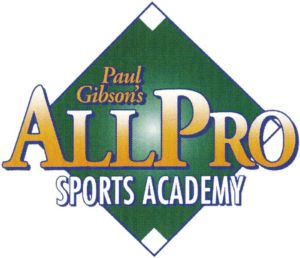 Chipper Jones: Here’s another player that I had the misfortune of watching terrorize the NL East for 19-years. This one is pretty cut-and-dried. He was drafted No. 1 overall in 1990 by the Atlanta Braves and wore their uniform for every one of his 19 seasons. He won the MVP in 1999 over a crowded field including every great players of the 1990s (Jeff Bagwell, Mike Piazza, Sammy Sosa, Craig Biggio,Larry Walker). He was an absolute Met-killer, which is why he named his daughter Shea. I also remember him flirting with .400 for the first-half of the 2008 season in which he batted .364 at age-36. He performed above the MLB average every season of his career and the lowest was his age-23 season. Factor in a World Series, 11 division titles, the switch-hitting ability, .303 AVG and .930 OPS and great defense and that equals a 95+ % of votes.
Chipper Jones: Here’s another player that I had the misfortune of watching terrorize the NL East for 19-years. This one is pretty cut-and-dried. He was drafted No. 1 overall in 1990 by the Atlanta Braves and wore their uniform for every one of his 19 seasons. He won the MVP in 1999 over a crowded field including every great players of the 1990s (Jeff Bagwell, Mike Piazza, Sammy Sosa, Craig Biggio,Larry Walker). He was an absolute Met-killer, which is why he named his daughter Shea. I also remember him flirting with .400 for the first-half of the 2008 season in which he batted .364 at age-36. He performed above the MLB average every season of his career and the lowest was his age-23 season. Factor in a World Series, 11 division titles, the switch-hitting ability, .303 AVG and .930 OPS and great defense and that equals a 95+ % of votes.
 Larry Walker: I think Brian Kenny said it best–you don’t discredit players that benefited from Coors Field in the 1990s, you adjust the numbers. Walker was definitely a player that benefited from Coors but he still had an incredible career.
Larry Walker: I think Brian Kenny said it best–you don’t discredit players that benefited from Coors Field in the 1990s, you adjust the numbers. Walker was definitely a player that benefited from Coors but he still had an incredible career.
Here’s his career splits:
Home: .348 AVG/.431 OBP/.636 SLG
Road: .278 AVG/..370 OBP/..495 SLG
So, yes the crux of his damage came in Denver at the high-altitude including his amazing 1997 MVP season in which he had the 32nd highest OPS (1.172) in MLB history. People forget that he had three Top-11 MVP finishes in Montreal including two Gold Gloves. When you factor in that he averaged 19 steals per year with great plate discipline (913 walks against 1,231 stirkeouts) for his career and great defense and I think he belongs in.
 Gary Sheffield: It is almost comical how little support Gary Sheffield receives for his career despite the fact that he is essentially Vladimir Guerrero with more power. Regardless of the era he played in, he hung around long enough to hit 509 HR, he had six Top-10 MVP finishes and five times he eclipsed the magical OPS number of 1.000. Over a 20-year stretch, he was below a league-average hitter only twice and it was in 1991 and 2008. During his best years, he was the most feared hitter for the Marlins when they were in the World Series, the Dodgers, Braves and the Yankees. All playoff teams. I think he’s a Hall of Famer.
Gary Sheffield: It is almost comical how little support Gary Sheffield receives for his career despite the fact that he is essentially Vladimir Guerrero with more power. Regardless of the era he played in, he hung around long enough to hit 509 HR, he had six Top-10 MVP finishes and five times he eclipsed the magical OPS number of 1.000. Over a 20-year stretch, he was below a league-average hitter only twice and it was in 1991 and 2008. During his best years, he was the most feared hitter for the Marlins when they were in the World Series, the Dodgers, Braves and the Yankees. All playoff teams. I think he’s a Hall of Famer.
Edgar Martinez: There’s been a massive push for Martinez this year as the clock was almost running out on him to make it to Cooperstown. He’s in his ninth and second-to-last year on the ballot. After receiving only 25.2 percent of the votes in 2014, he now looks like he has legitimate shot to make it as soon as this year. The shift to younger and more progressive voters have spurned a huge uptick in his percentages. Let’s first say this; I don’t care if you are only a designated hitter. If you are the best left tackle in NFL history you are a one-dimensional player and that doesn’t exclude you from being a Hall of Famer. If you are truly one of the best at what you do, then you are a major part of MLB history. The old-time voters would point to his low career hit total (2,247), HR (309), lack of MVP, World Series ring and defensive position as enough of a reason not to vote for him. His rate statistics, however, are elite. He compiled a .312 AVG/.418 OBP/.515 SLG and 147 OPS+. Sixteen of his 18 seasons he compiled an OPS+ above league-average. For a more complete description of why Martinez should be a no-brainer for Cooperstown, click here to read an outstanding article from the Sporting News.
Curt Schilling: Arguably the best postseason pitcher of all-time, his numbers are brilliant enough to get him if he was even a borderline pitcher. He won three World Series (2001, 2004, 2007) and won the NLCS MVP in 1993 with Philadelphia. Career record in the postseason of 11-2 with a 2.23 ERA and 0.968 WHIP over 133 IP. Absolutely lights-out in the pressure spots, including the memorable “blood sock game” in 2004. Additionally, his regular season was pretty dominant as well. I ignore the ERA because the era that he pitched in was ruthless to starting pitchers, with the exception of Randy Johnson, Roger Clemens and Greg Maddux. Schilling is in the next tier. He got a late start to his career, his first dominant season wasn’t until his fifth season. His best stretch was from ages 34-36 when he had three top-2 Cy Young finishes. Despite “only” compiling 216 wins, he has the highest K/BB rate in MLB history at 4.38. Schilling deserves to be in.
Johan Santana: The longevity was obviously not there but Santana’s Hall of Fame case revolves around his peak. This is the same case that was made for Sandy Koufax, who retired at age-30 due to elbow problems but compiled 49.0 WAR and won three Cy Young Awards and finished third in another year. Adjusted for the era, Koufax’s five year stretch was 13 percent better than Santana’s who was successful during a prolific offensive period in MLB history. Johan won two Cy Young Awards, but was robbed of a third in 2005 when he was far superior to Bartolo Colon but was edged out because of fewer wins. His WAR of 7.2 was nearly double that of Colon and Mariano Rivera. He was regarded as the best pitcher in baseball from 2004 to 2008. For me, my most die-hard years as a baseball fan were probably between 2001-2008 (prior to having any real responsibility) and I vividly remember his prime. I remember when the Mets were shutout by him in 2007 and my dad saying “why can’t we ever get a pitcher like that?” They did wind up getting him during an intense negotiation in February 2008. For a junior in high school, I was elated. To get the best pitcher in baseball during his prime was a treat. His season was incredible and he definitely could’ve made a case to be Cy Young. He put the Mets on his back during September of 2008. I’ll never forget his 125-pitch effort against the Cubs and then he came back on three-days rest and fired a three-hit shutout against the Marlins with all the pressure on. He never did duplicate that level of success except for that fateful evening at Citi Field on June 1, 2012 when he was unhittable and fired the first and only no-hitter in Mets history. Who can forget the classic Gary Cohen call of “IT HAS HAPPENED!” While Santana does not have the longevity of a Randy Johnson, he did have an unbelievable run. As a Mets fan during his prime, I will take my argument to the grave that he was a Hall of Fame pitcher.
Billy Wagner: The big knock on Wagner is that he allowed 13 runs in his postseason career in 11.2 innings. By any measure, he was not effective in the postseason when the lights were the brightest. As a Mets fan, I saw first-hand how he struggled in big moments especially in 2007 when the Phillies overcame the 7-game deficit with 17 games to go. Big data will tell you that these small sample sizes are anomalies as opposed to the norm. I’m willing to look at the entire body of work and for much of his career he was the third best relief pitcher in the game behind Mariano Rivera and Trevor Hoffman. I think people are biased against closers because of their lack of volume. Also, proponents of advanced stats discredit saves but that was the way the game was played during that era and he was elite at doing it,.
In his career, he compiled 903.0 IP and struck out 1196 strikeouts and a 0.998 WHIP. He yielded only 6.0 H/9 and 0.8 HR/9. Seven-time All-Star and he saved 422 games (sixth all-time). I don’t see how that’s not considered an all-time great.
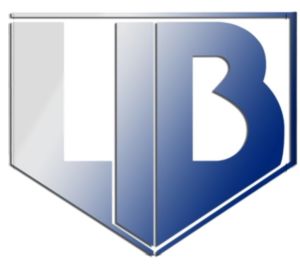 Manny Ramirez: If he had simply retired when his bat speed slowed down as opposed to taking steroids I think he would’ve already been in. With his two World Series rings (plus two pennants with Cleveland), his 555 HR, .996 OPS, nine top-10 MVP finishes and his penchant for clutch-hitting, Ramirez is one of the best right-handed hitters in the history of the game. Over the course of a 17-year stretch from 1994-2010 his 162-game average was 40 HR and 130 RBI. That is MVP caliber for almost two decades. When you fail two drug tests, though, and have the reputation for not being a good teammate and also have a domestic abuse case attached to your name, it is tough to overcome that. At the same time, I think if a guy like Ty Cobb is in the Hall of Fame and people were willing to focus on the baseball statistics, then I believe you don’t close the door on an impact player like Manny.
Manny Ramirez: If he had simply retired when his bat speed slowed down as opposed to taking steroids I think he would’ve already been in. With his two World Series rings (plus two pennants with Cleveland), his 555 HR, .996 OPS, nine top-10 MVP finishes and his penchant for clutch-hitting, Ramirez is one of the best right-handed hitters in the history of the game. Over the course of a 17-year stretch from 1994-2010 his 162-game average was 40 HR and 130 RBI. That is MVP caliber for almost two decades. When you fail two drug tests, though, and have the reputation for not being a good teammate and also have a domestic abuse case attached to your name, it is tough to overcome that. At the same time, I think if a guy like Ty Cobb is in the Hall of Fame and people were willing to focus on the baseball statistics, then I believe you don’t close the door on an impact player like Manny.

